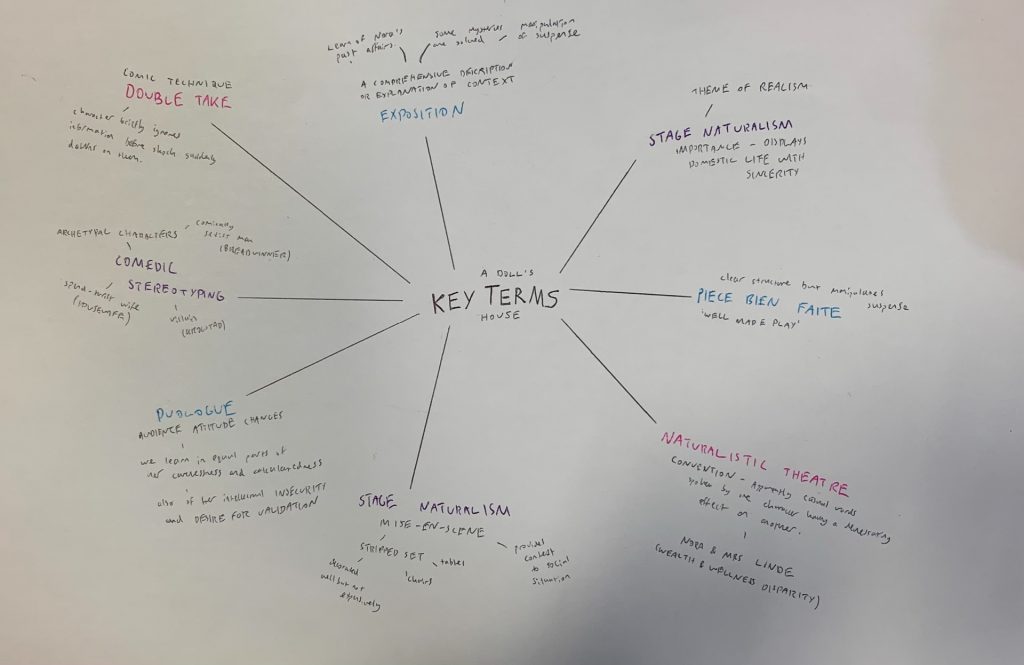How is Nora’s terror illustrated in the opening sequence?
Shorter, fragmented sentences and a repetition of dashes and exclamation marks connote frenzy and terror. Gradually, as Nora confides in the maid, her sentences return to normality, illustrating a clear change in behaviour and thus further emphasizing the erratic nature of the prior behaviour.
How is the nurse important in this short exchange with Nora? – Think about female worldly experience.
The nurse reinforces the disadvantaged role of women in society, and emphasises the hardships they have to suffer to get ahead. For example, the nurse abandons her own children, the ultimate symbol of femininity, for class security; to achieve some form of social status, she abandons her status as a woman. (Foreshadowing?)
How does the dress become symbolic – Helmer’s choice of costume for Nora?
Helmer’s choice of a Neapolitan fisher-girl links to his recuperation in Italy, as ‘Neapolitan’ derives from Naples in the south of the country. Her being a ‘fisher-girl’ could be symbolic of the falseness surrounding their holiday there.
In literature of the period, Nora’s character would have been given a chance to redeem herself through selflessly nursing an invalid – how is this cliché shattered with regards to Rank?
Contrastingly, she plans to take advantage of his devastation for monetary gain. This plan is only uprooted when she discovers he loves her, an idea that she rejects instantly with no sympathy. Moreover, she gets frustrated with him, as his doomed love for her has complicated her opportunity to profit off of him.
